Projects and Science
Peru
South America
ABT

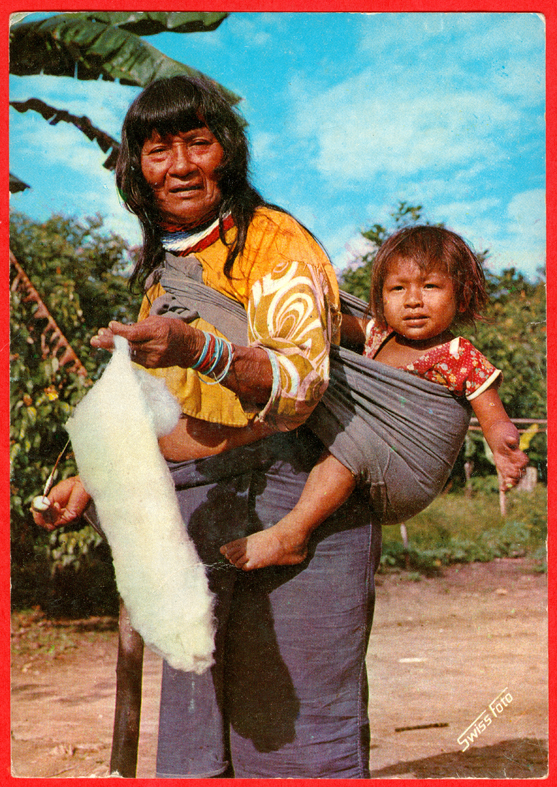

Shipibo woman spinning, 1971.
The Shipibo-Conibo are an indigenous people along the Ucayali River in the Amazon rainforest in Perú. Formerly two groups, the Shipibo (apemen) and the Conibo (fishmen), they eventually became one distinct tribe through intermarriage and communal ritual and are currently known as the Shipibo-Conibo people.
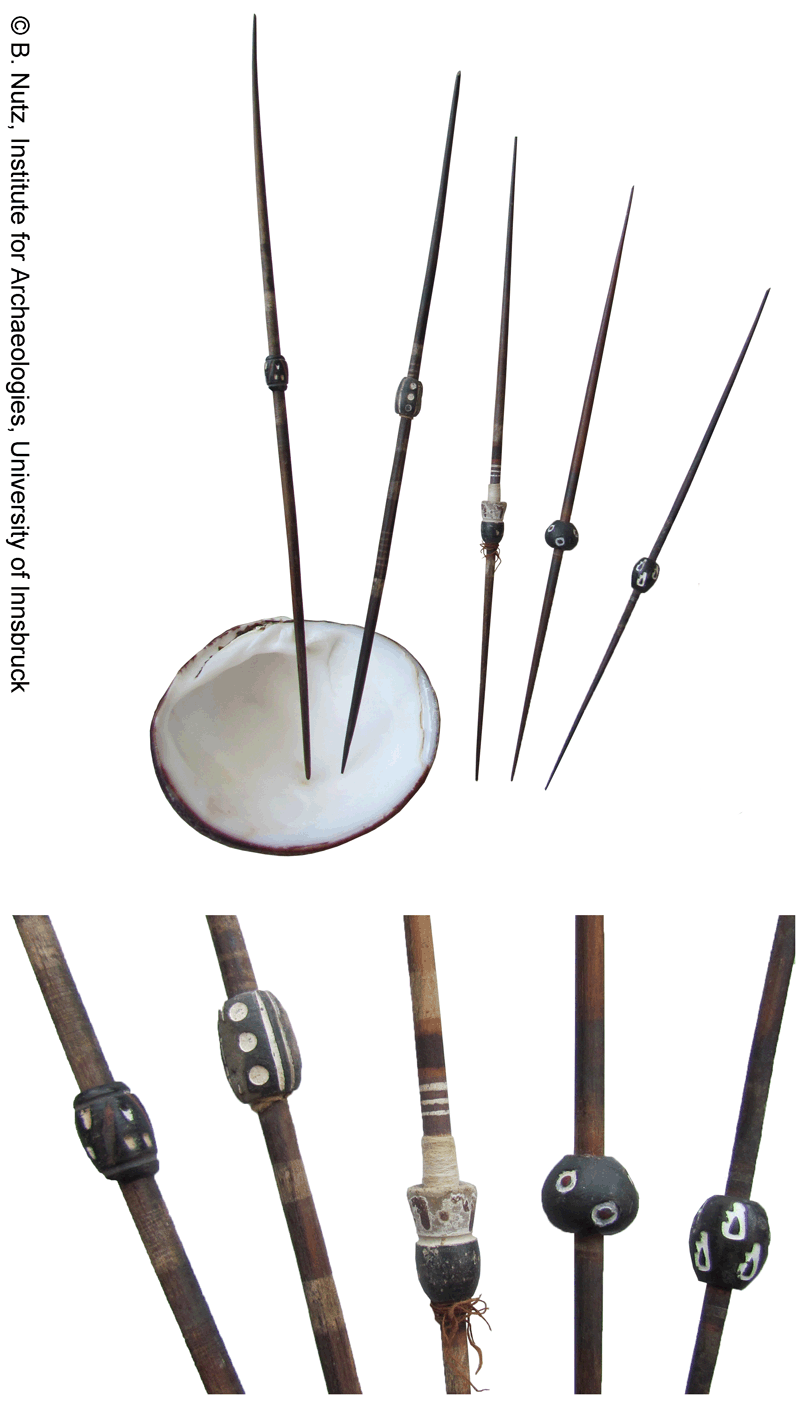
Spindles from Coastal Peru (Chancay culture, c. 1000-1470 AD1). Wood, ceramic, thread. The wooden spindles are painted with bands of varying colors. The terracotta whorls are painted and vary in form. Lengths: 9.52" to 12.91". Whorl diameters: 0.39" to 0.59". Weight (complete spindles): 3,26 g to 5,8 g.
Spindles from Coastal Peru (Chancay culture, c. 1000-1470 AD). Wood, ceramic, thread (cotton and Alpaka wool). The wooden spindle in the middle is painted with bands. Lengths: 9.21" to 11.61". Whorl diameters: 0.55". The fine cotton yarn on the spindle left in the picture has a thread diameter of 0.2 mm to 0.5 mm (see microscope image below right).


Spindlesand spindle whorl (left) from Coastal Peru (Chancay or Chimu culture, c. 1000-1470 AD). Wood, ceramic. Lengths: 11" and 12.08".
How are these spindles operated?
There are two theories as to how these spindles were operated. Firstly as supported spindles, secondly, and more likely, held almost horizontally at the lower end and constantly rotated between the fingers (see: Junius B. Bird 19732). In the second method the fingers that held the spindle were possibly dusted with crushed chalk to improve the grip (similar to modern climbers) or wetted with water. Small ceramic bowls or large shells that sometimes were found together with spindles in weaver´s baskets either served as support for the spindles (according to the description of a weaver´s basket from Emory University, Michael C. Carlos Museum: "A small bowl, used to keep the end of the spindle in place while making fine thread" or Junius B. Bird 19733) or as containers for chalk dust or water. Therefore baskets sometimes also contain pieces of chalk. Modern day spinners of Ecuador use both ash from the stove and water. In a video on YouTube you can see Trinidad Catagua of Zapote, Provincia de Manabi, Ecuador, spinning. Now and then she also dips her thumb in water she keeps in a small bowl on the floor.
The use as drop spindle however is unlikely because of the low weight of the spindles and their small whorls. Especially the small whorl diameter and the momentum associated with it (in this case it hardly exists) prevent the use as drop spindles. Only when the spindle has gained weight due to the cop a drop spindle usage is conceivable.
Example for ceramic dishes: Weaver's workbasket and implements, Peruvian (Chancay), Late Intermediate Period, A.D. 1000–1476, Central Coast, Peru, Museum of Fine Arts Boston, Accession Number 02.680. The basket contains 154 wooden spindles, picks, shed sticks, and bobbins (some wound with camelid fiber and some with cotton), large skein of cotton plied with unidentified vegetal fiber; 16 loose painted wooden spindle whorls; unspun camelid fiber; a ceramic dish; camelid or deer bone pick; spine needle; two pieces of chalk. Museum of Fine Arts Boston (10.06.2016)
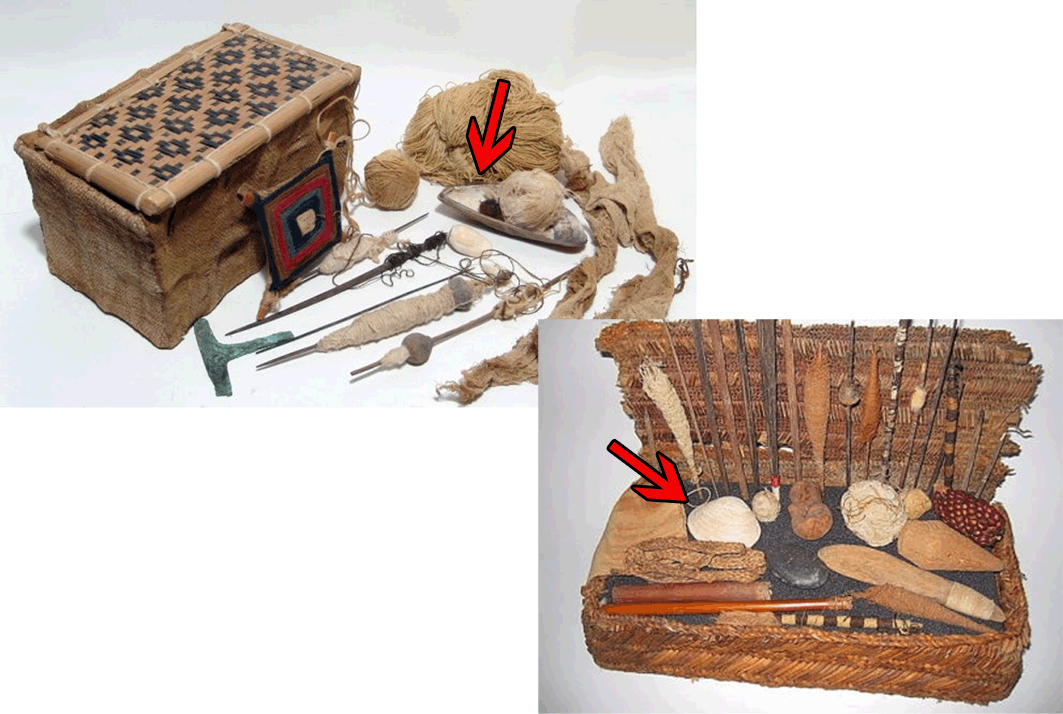
Two weaver's workbaskets in which, among other tools, big shells (red arrows) probably used as bowls (to support the spindles or for chalk or water?) were found.
Images from: liveauctioneers.com and pinterest.com.

Trinidad Catagua from Zapote, Provincia de Manabí, Ecuador, spinning. A: rotating the spindle. Note the small bowl at her feet. B: dipping her thumb into the small bowl. C and D: winding yarn onto the spindle with a re-winding technique where the thread spun at the tip of the spindle is wound onto the fingers in a figure 8 motion, and then released, rewinding that thread onto the center part of the spindle.Images from YouTube-video:
Literature:
Textiles from the Chimú and Chancay cultures: Hattie Jo Lehman, Textiles of the Chimú and Chancay Cultures of Coastal Peru: A Comparison of Processes and Techniques. (10.06.2016)
The information on the spinning technique in this work, however, is to be viewed critically. The diagram on page 38 (Fig. 4) shows the modern use of a drop spindle.
Precolumbian textiles: Ferdinand Anton, Ancient Peruvian Textiles (London 1987).
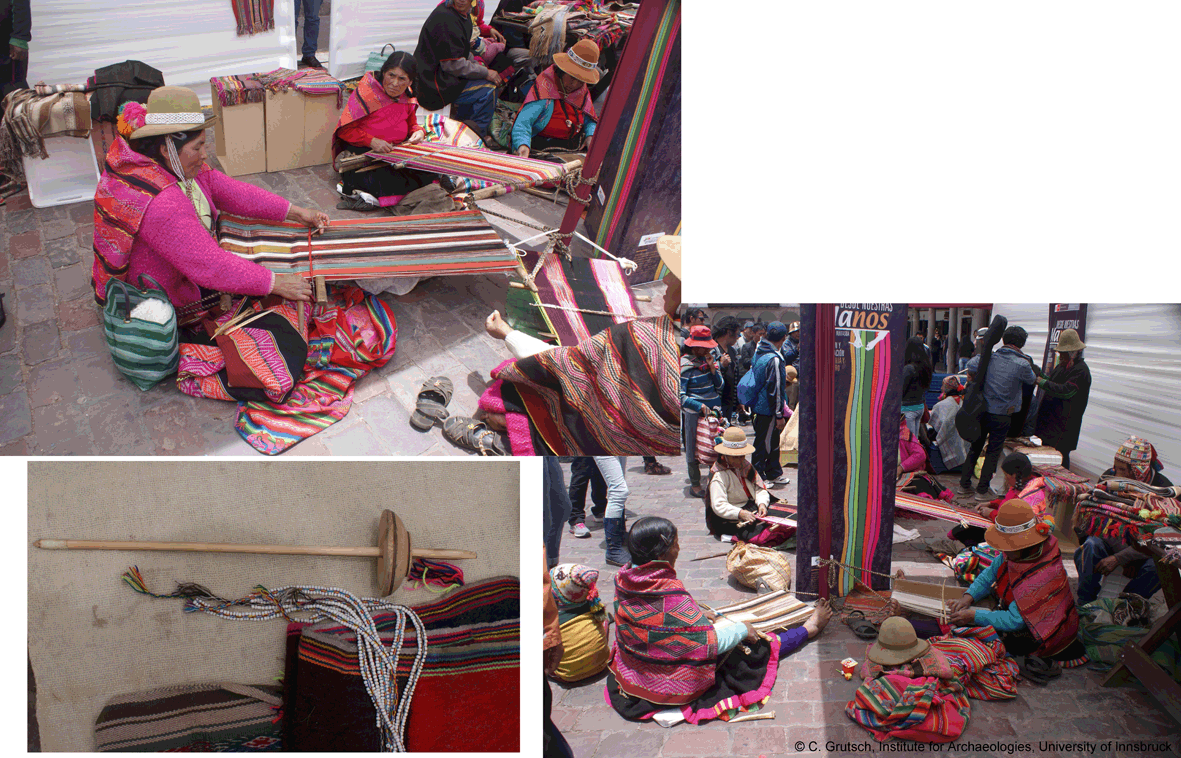
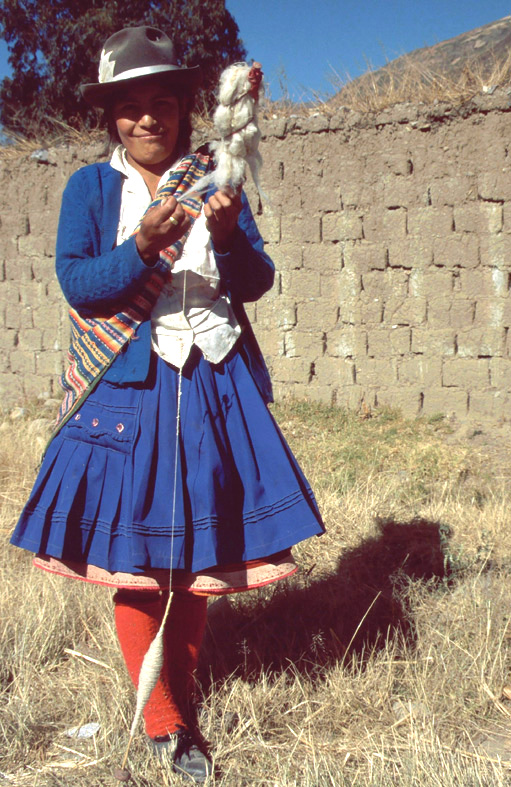
Indio woman spinning with a bottom-whorl drop spindle. Photo: Hermann Föger, 1996.
Foto: Hermann Föger, 1996
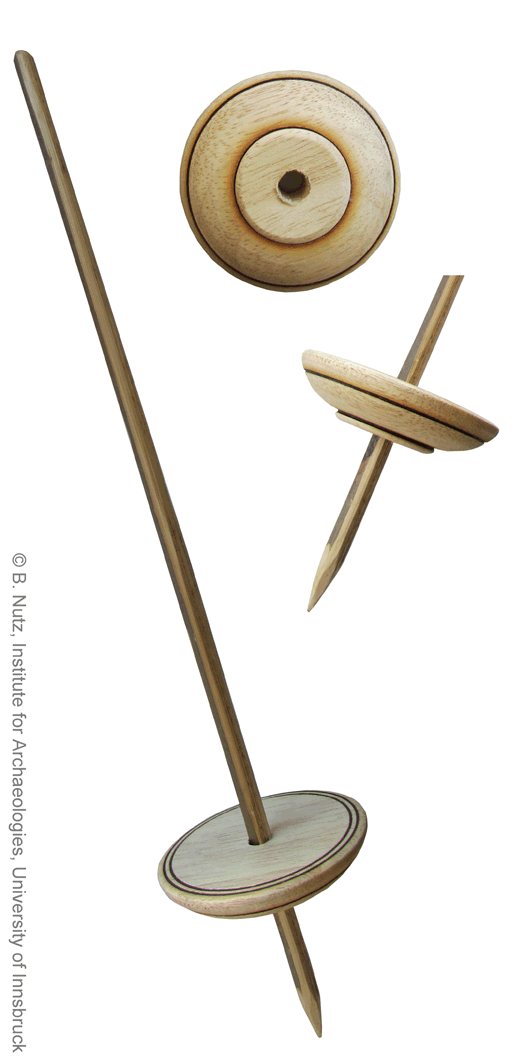
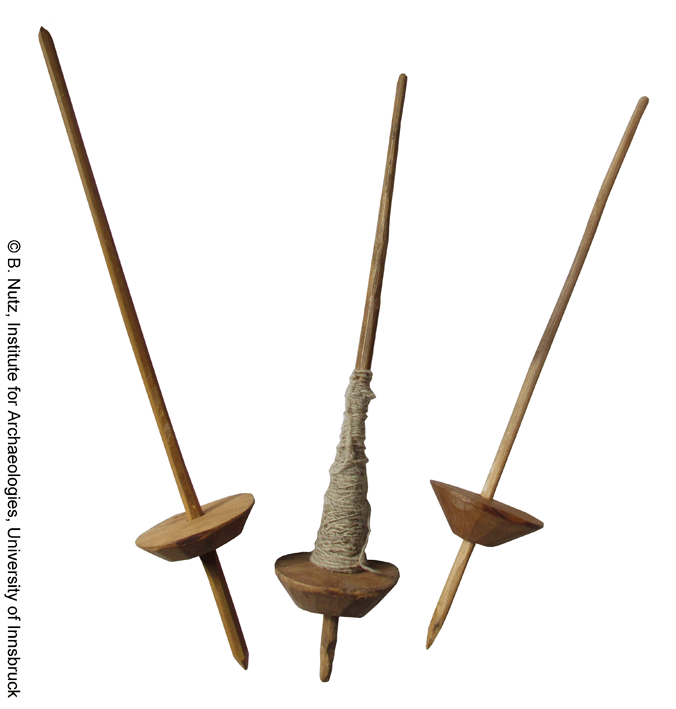
Wooden spindles with cotton yarn. Length from left to right: 11.2 / 11 / 10.8 inches. Diameter of the spindle whorls: 2.1 / 2.3 / 2 inches.
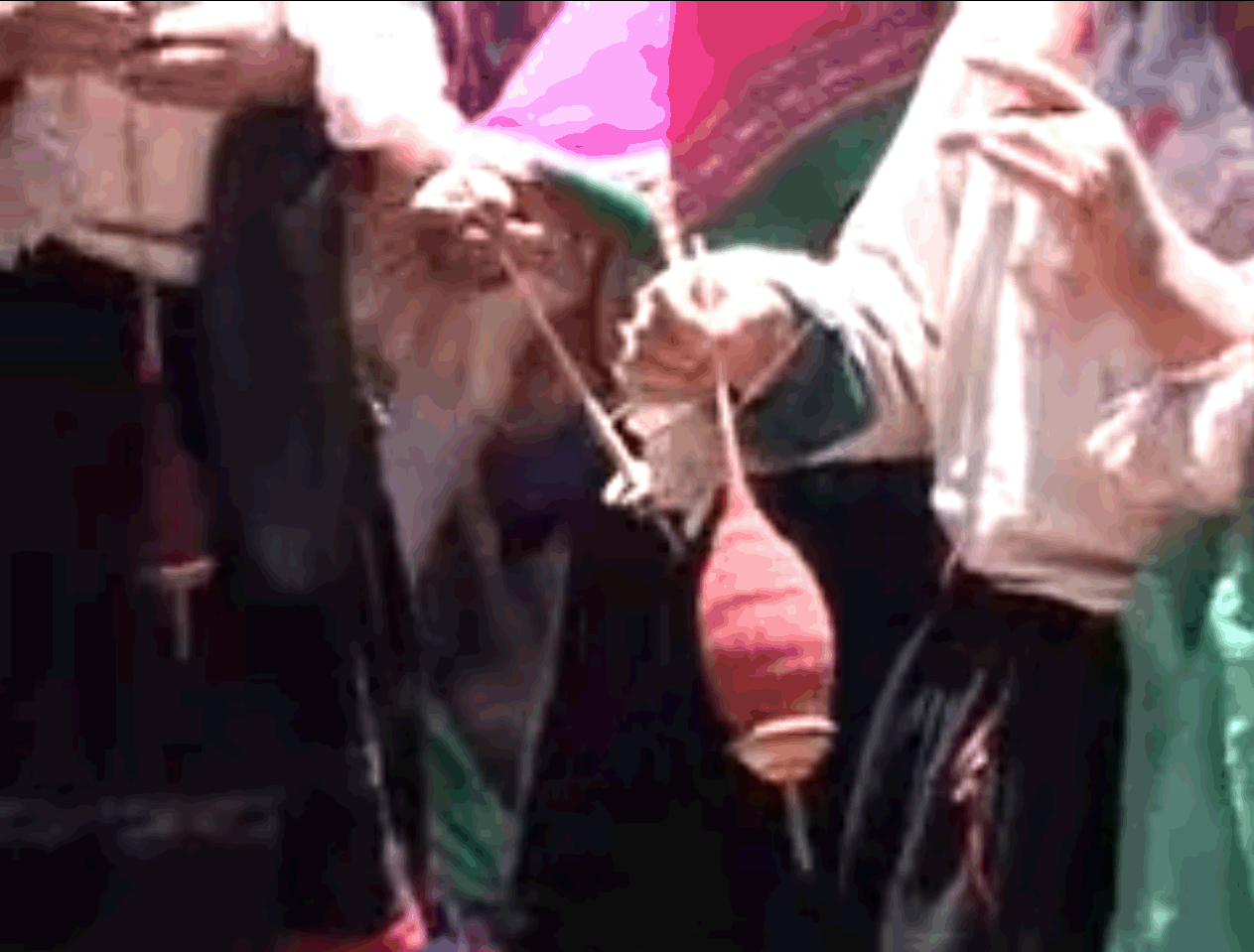
Image from a video on YouTube: Puschca
Frauen aus dem Andendorf Quenqo, 45 km von Cusco entfernt und auf einer Seehöhe von rund 4000 m gelegen, beim Spinnen.
Bild aus einem Video auf YouTube. 1 The Metropolitan Museum of Art in New York owns very similar spindles but state their origin as Nazca culture (c. 100-800 AD), example here ) whereas this spindle type is again classified as Chancay by the Museum of Fine Arts in Boston (see link to the weaver´s workbasket below).
2 “…a local spinner was observed making cotton yarn using a length of straight, slightly tapered shoot of the callaca shrub common in the region. Twist was imparted to the fibers by rotating the lower, thicker end of the shoot with the fingers of the right hand, the finished yarn being wound about the simple spindle. …. At no point did the spindle rotate by its own momentum, nor did it hang free or rest on any surface or have a whorl. In this instance, the yarn was being made as the woman walked to market.”
From: Junius B. Bird, Fibers and Spinning Procedures in the Andean Area. In: Ann Pollard Rowe, Elizabeth P. Benson and Anne-Louise Schaffer (eds.), The Junius B. Bird Pre-Columbian Textile Conference 1973, Washington, DC (Washington DC 1979), 13-17.
3„Later ones with whorls have beautifully made shafts, tapering in both directions, and are generally made of a hard wood, though sometimes of long, slender cactus thorns. The whorls vary greatly in form, weight, and decoration, and are made of various materials. The majority of Peruvian coastal whorls are so small that they must function more to keep the yarn from slipping on the shaft than as a flywheel. With the spindles are various small cups or bowl-like supports in which the lower ends of the spindles rested while rotated. Such support eliminates some vibration and the weight-stress of the spindle from the fibers as they are drawn out and drafted, and seems to be a requisite for the production of fine, even yarns.”
From: Junius B. Bird, Fibers and Spinning Procedures in the Andean Area. In: Ann Pollard Rowe, Elizabeth P. Benson and Anne-Louise Schaffer (eds.), The Junius B. Bird Pre-Columbian Textile Conference 1973, Washington, DC (Washington DC 1979), 13-17.
4 While it is conceivable that the whorls where meant to hold the yarn in place the supported use of these pre-Columbian spindles from Coastal Peru has to be challenged. The shafts of the spindles are sometimes slightly bent which makes them unbalanced. They do not rotate smoothly at all when one tip rests in a bowl thus rather adding vibration than reducing it. Now the bent shafts might have come with age but there are still the very small whorls (very light, very small diameter) to consider. Those spindles basically have no momentum at all. With the horizontal use however the bent shafts and small whorls are much less of a problem. AND - those shafts are real thin and fragile. Putting weight on one tip would probably have them break rather sooner than later.